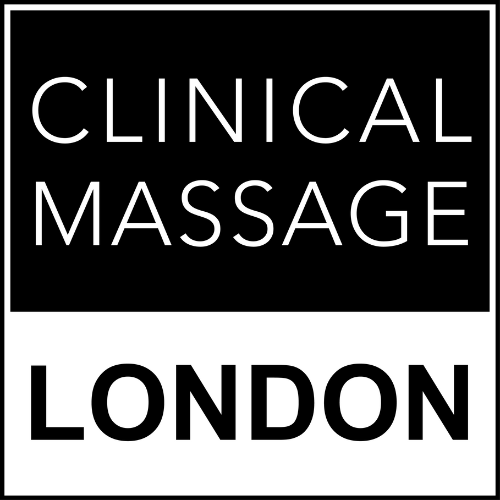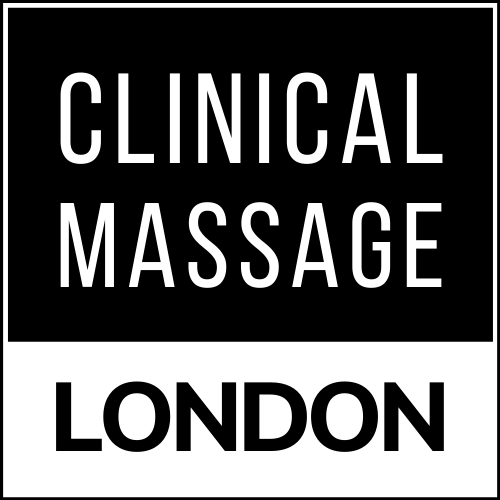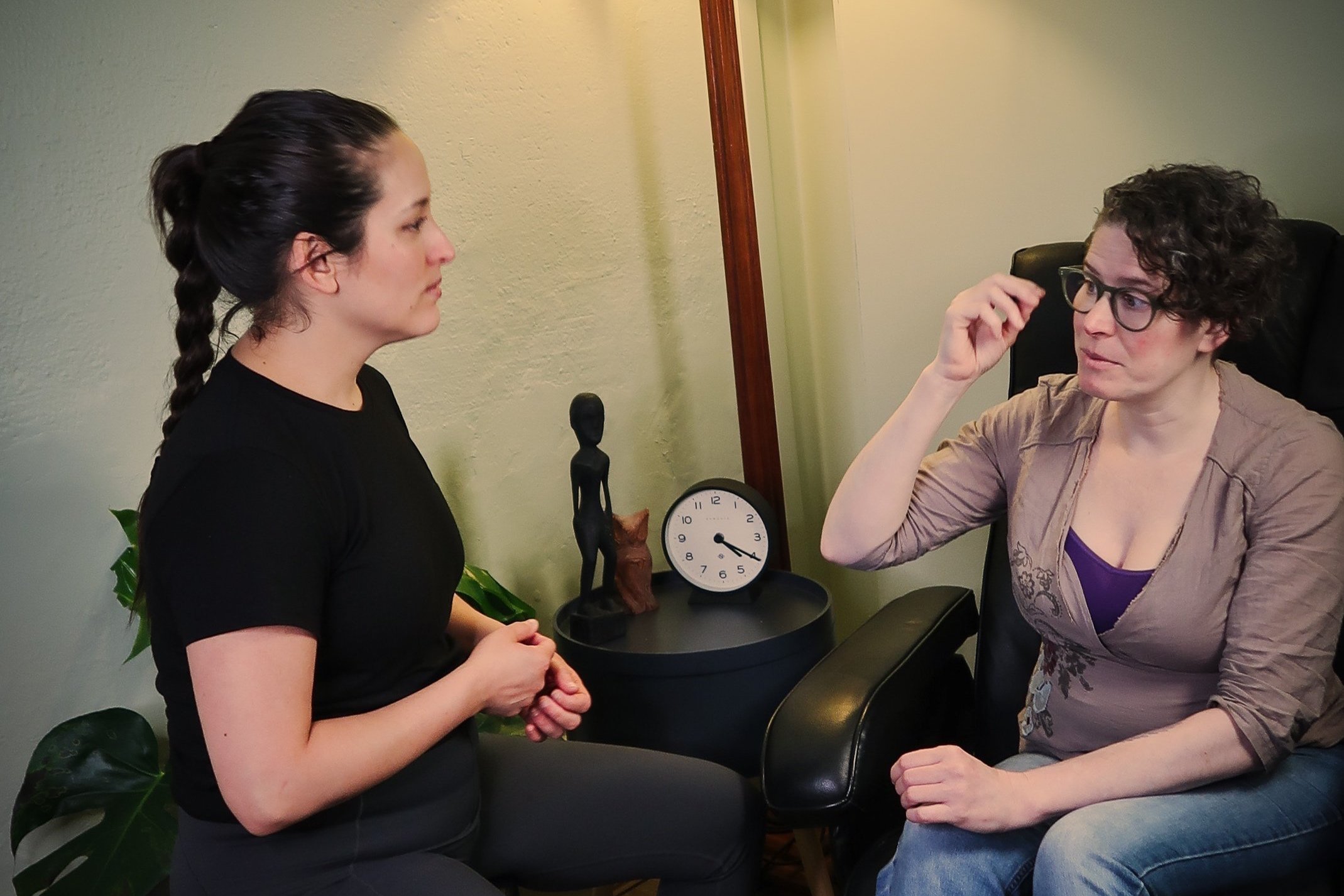What Are trigger Points?
Trigger points are tender on palpation, and when active, can also be associated with a predictable pattern of referred pain.
I want to tell you about one of the most pervasive, often overlooked sources of musculoskeletal pain - and how massage can be surprisingly effective for pain relief.
But first, what is a Trigger Point?
A myofascial trigger point - also simply known as a ‘trigger point’, is a tender, hyper-irritable spot within a muscle.
When provoked, it can refer pain and other sensations to a fairly predictable target zone - usually located peripheral to the trigger point, but sometimes also central to it.
These hyper-contracted bands of muscle fibre can even occur within a muscle that may not otherwise appear to be have an abnormally high tone.
And whilst the causes of myofascial trigger points are not well understood, their associated symptoms and patterns of referred pain have been documented with great consistency over the years.
What are the Symptoms of a Trigger Point?
They are tender on palpation, and when active, can also be associated with a predictable pattern of referred pain. This sensation of ‘pain’ can radiate outwards from the tender point or may be felt in other parts of the body, and has been descried as ‘deep’, diffuse, ‘burning’, ‘tightening’ or ‘pressing pain’. The area around the trigger point may also associated with a feeling of ‘numbness’, ‘coldness’, ‘weakness’, ‘stiffness’ or ‘fatigue’. In fact, trigger points can cause the host muscle to test as weak, and can produce a loss of range of motion in the joint it attaches to.
What causes Trigger Points?
Trigger points' are thought to arise due to continuous low load activities.
Think sitting slouched at at a desk clicking on a mouse all day - the kind of activities likely to be associated with lots of repetitive, specific movements, or held positions. Research has shown that trigger points are more common in individuals who perform repetitive low load muscle exertions as part of their daily activity. Suboptimal postures that are a source of constant low load activity are also though to play a role in the development of trigger points. There is a good chance that the nonspecific low back, neck or shoulder pain you come home with may be related to trigger points. The good news? Trigger point-related pain can often be relieved by trigger point therapy.
But what are Trigger points, in a Physical Sense?
I mean, what is it about these low load activities that actually causes them? Though there are various theories - most point to changes in the local biochemistry of tissues that house the ‘trigger point’.
The Integrated Trigger Point Hypothesis
One popular theory known as the ‘integrated trigger point hypothesis’ points to the development of a localised group of muscle fibre contractures. This is where a group of individual muscle fibers are sustained by abnormal chemistry that develops at the point where they are innervated by their motor neuron (which sends motor impulses from your brain and spinal cord to your muscles). Sometimes a strain, overuse, or some other form of mechanical stress within a muscle region can trigger an excessive release of calcium ions in the area, which in turn triggers an excessive release of a powerful neurotransmitter known as acetylcholine.
Trigger Points are Associated with the Development of a ‘Metabolic Crisis’
The continuous flow of this biochemical messenger then causes the contractile units within the immediate area around the motor end plate of the motor neuron to slide into a fully shortened position. The taut tissue in turn compresses surrounding blood vessels, which is thereby thought to interrupt blood flow (referred to as ‘ischemia’), reducing cellular levels of oxygen (hypoxia) and nutrients in this localised area. These events are thought to trigger a what has been dubbed a ‘metabolic crises’. An increase in tissue acidity, calcium ions and chemicals, proteins and neurotransmitters related to inflammation and pain follow suit. All this leads to the increased sensitivity to pressure and pain within the localised region within the muscle we refer to as the ‘trigger point’.
How Are Trigger Points Treated?
All treatments start with a brief consultation where your massage therapist will ask you to talk about your pain. The answers to these questions provide starting off points for how to approach the treatment, and may offer clues on whether the pain is trigger point related.
Firstly, you will be asked to describe the quality of your pain sensation.
Pain that is deep and achy, and triggered by moving too little or doing too much for example, are characteristic of trigger points.
If the sensations described are sharp, electric or tingling on the other hand, the pain may be related to other causes - such as nerve root irritation or compression syndromes.
Distinguishing between the sensations and possible causes will help manage expectations for treatment outcomes, and allow your therapist to adjust their treatment strategy accordingly.
The second question will be about the location of your pain.
Where you feel the sensations can offer important clues about which muscles to target, because trigger points in different muscles are associated with specific pain patterns.
Sometimes, these pain patterns may overlap - for example trigger points in the gluteal muscles can refer into the low back, as can trigger points in the erector spinae and quadratus lumborum muscles.
By identifying possible sources, your therapist will know what regions and areas to cover in in your treatment. Often, the best strategy is to simply cover all the bases and respond to what we find during the treatment.
This minimises the chances that we ‘missed’ something - and working broadly around the area of focus is always a good idea as tension is often present elsewhere due to bracing around an area of pain.
The third question will be about recent activities, and what makes the pain better or worse?
Asking about when the pain started, what you did differently around that time, and activities that make the pain better or worse can be useful sources of information to guide us in how we approach the treatment.
Let me give you a scenario for what one of these fact-finding missions might look like, and how it translates into a strategy for treatment:
Someone comes in with a deep ache that starts at the low back that radiates into the buttock and wraps around the side of the hips - a common pain pattern for trigger points in the quadratus lumborum muscle, which laterally flexes, extends and stabilises the trunk.
Trigger points may arise when this muscle is placed in a shortened position for extended length of time. Think awkward postures from twisting or leaning to one side on an armchair or at your desk. Through a pre-treatment consultation, your therapists finds out you've just been moving house, and bending down to lift and carry heavy boxes a lot.
As trigger points can occur in response to unaccustomed eccentric loading of the muscle when awkwardly lifting heavy objects. So (like a suitcase on holiday or a heavy toddler!), or quick bends or twisting movements during a weekend of golf, the therapist may then take this into consideration when suggesting a treatment strategy.
For example:
Your therapist may suggest incorporating general work to warm up and relax the area, including myofascial release and deep tissue massage around the back, low back, and hips. And they might then suggest we incorporate some specific trigger point if you find any particularly tender points, especially ones that may recreate your symptoms of low back pain.
What does the actual ’Trigger Point Therapy’ look like?
Trigger point work entails localised compression of between 12-15 seconds on the tender point, or until the intense localised as well as referred sensation has decreased. Sometimes this work can elicit a 'melting' sensation of the tissues, followed by a sense of relief.
This work may then be followed by elongation (stretching) or the tissues to help ‘reset’ the appropriate relationship of actin and myosin filaments within the tissues around the site.







